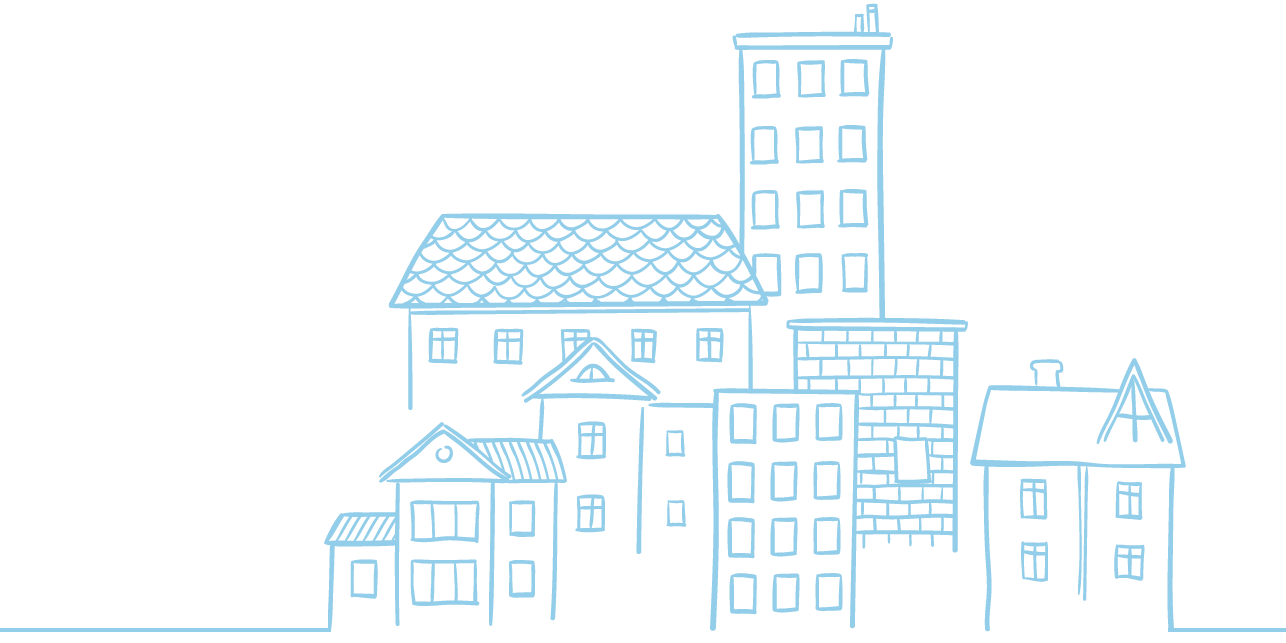Mold looks bad and is a potential source of health problems. How can you tackle it in your home and make it a healthier place?
Nobody likes encountering the black stuff that builds up between tiles, dark stains on floors and ceilings, or nasty orange growths around taps or plug-holes. These are the tell-tale signs that your home has indoor mold.
 Build-ups of this kind look unsightly, and they can also be a threat to your family’s health, particularly if members of your household suffer from asthma or allergies.
Build-ups of this kind look unsightly, and they can also be a threat to your family’s health, particularly if members of your household suffer from asthma or allergies.
But what exactly is mold, what problems can it cause and, most importantly, how can you tackle it and prevent it from returning to your home? We detail some of the key facts about mold removal and mold remediation below, as well at taking a closer look at mold in your home and health.
Contents
- What is the difference between mold and mildew?
- Common areas for mold
- Mold can damage your family’s health.
- How to get rid of mold in your home.
- How do I deal with existing mold?
- How can I tell if there’s undetected mold in my home?
- How to prevent mold and mildew in your home.
- Key takeaways.

What is the difference between mold and mildew?
Mold and mildew are species of microscopic fungi that thrive in warm, damp conditions. Mildew usually refers to certain kinds of mold or fungus, usually with white or grey patches that grow on surfaces, for instance on shower walls, windowsills, and other places with plenty of moisture.
Mold often include all species of microscopic fungi that grow in the form of multicellular filaments, called hyphae. Indoor mold is often black or green in color and may penetrate deeper into building materials1. In this article, we will focus on mold.
Mold spores exist everywhere, including in the air. Usually we don’t notice them and they don’t do us any harm, because they’re present in such small quantities. When the conditions are right though, they settle on surfaces and start to grow2.
Mold in the home requires requires moisture. For that reason, it is often found in damp locations with high humidity, like bathrooms, laundry rooms, kitchens, and basements.
Common areas for mold:
.jpg) According to public health agencies, at least one third of buildings have damp conditions that may encourage the development of mold and bacteria3. The risk increases in spaces that are poorly ventilated, with high humidity. Examples include:
According to public health agencies, at least one third of buildings have damp conditions that may encourage the development of mold and bacteria3. The risk increases in spaces that are poorly ventilated, with high humidity. Examples include:
A basement in frequent use:
Living in a basement apartment is great, but they can sometimes be vulnerable to mold. Maybe you don’t live in your basement, but you’ve converted the space into a playroom for the kids. One thing to remember is that any furniture, play-things or other items could easily become damp and moldy; particularly if they’re next to walls.
A damp unused basement:
Many of us use our basements as storage areas for stuff we don’t usually need. It’s easy to overlook any leaks or damp patches on walls or ceilings, as we are not always in the room... However, if you don’t use your basement often, you should still regularly check for damp patches and that ‘damp smell’.
The bathroom:
The warm, wet conditions in your bathroom are a utopia for mold. If the space is not properly ventilated, whether from a window or a fan, then the problem is likely to increase. Tiles in the shower and beside the bath are hotspots, particularly if you have an enclosed tub bath, while pink gunk can grow around plug-holes and taps. But there are other potential locations for mold that might not be so obvious.
You may want to check underneath the toilet, or around its tank, in toothbrush holders and mugs, beneath the bathroom sink or inside any bathroom cabinet, for example. Mold may also build up on pipes behind the toilet, bath, or sink. Shower curtains can get pretty bad too, if they’re not cleaned regularly.
Black mold can form on walls and ceilings. You may wonder, what does black mold look like exactly? It will be slimy, black, darkish grey, or even slightly green. Black mold may look pretty permanent, but it’s worth giving it a good scrub to see whether it will come off. If in doubt, call a professional.
The kitchen:
In the kitchen, mold is likely to grow under the sink, but remember out-of-sight locations above your cookers and hobs, that could harbor fungi. You would be wise to check spots that are normally out of reach. These include the tops of cupboards, or behind the microwave or fridge, where temperatures cause high humidity and leaks may develop.
An unventilated loft:
Just like the basement, you probably don’t visit your loft very frequently. There are often water tanks and heaters up there, so leaks and high humidity are likely. In addition, roof sheathing and damp insulation provide a potential source of nutrition for mold.
Where items are kept next to outside walls:

You might have furniture pressed against a back wall, or it could be as simple as a picture hanging on a hook. Either way, the air in your home becomes warmer than the air touching the wall, because the object acts as insulation. That causes droplets to form and mold has another great place to grow4.
Other possible spaces that often experience mold growth include outbuildings, garages, or sheds where fungi can grow. Moisture is really important when we’re thinking about how to get rid of mold and mildew. But it’s not the only consideration. We also have to think about the layout of our homes and how we use living space.
Mold and your family’s health

 Mold can have a real impact on your health, particularly if members of your family have allergies or asthma. The spores trigger asthma attacks and it was estimated that 21% of asthma cases are attributable to mold and dampness at home, while some people get allergic reactions, like sneezing, runny noses, skin rashes, or sore eyes5.
Mold can have a real impact on your health, particularly if members of your family have allergies or asthma. The spores trigger asthma attacks and it was estimated that 21% of asthma cases are attributable to mold and dampness at home, while some people get allergic reactions, like sneezing, runny noses, skin rashes, or sore eyes5.
Children may be particularly vulnerable to the effects of mold. People are 40% more likely to have asthma when living in a damp or moldy home6, while mold can also cause infections for those with weaker immune systems7.
How to get rid of mold in your home
The action you take will depend on how far mold has spread in your property. Most outbreaks you can handle yourself, but if there is serious water damage or the moldy area is over a meter square you might want to call in professional help.
Removing mold on hard surfaces
Hard surfaces like walls, ceilings, tiles, worktops, and bathroom suites, can be scrubbed with detergent and water, which removes a lot of mold in the home. Make sure that you dry the areas carefully after the build-up has been removed.
It’s important not just to paint over moldy surfaces. If you haven’t cleaned and dried the affected area properly, growth is likely to continue with the result that the paint will simply peel away again.
Carpets, rugs, and softer items
For softer, more porous materials, like ceiling tiles, rugs, carpets, or cardboard, your only option may be to dispose of these items completely. Mold is likely to get into hidden spaces and crevices, proving difficult to remove, although less serious build-ups can sometimes be shifted by carpet shampoos8.
Keeping things warm and dry
In warm, damp places like the kitchen or the bathroom, there are ways of discouraging growth, but be aware that you are likely to have to clean quite regularly to prevent new molds from appearing. Be sure to wash and dry items like dishes, work surfaces, and bathroom items regularly.
Ultimately, if the problem has been caused by a water problem, like a leak or a drip, the mold will recur unless you get the underlying issue repaired properly.
How can I tell if there’s undetected mold in my home?
Some outbreaks of mold are glaringly obvious, but it might be trickier to determine whether there’s an underlying issue. There are three distinct methods for testing for mold in your home.
You can use swab- or tape-based kits to sample for mold spores on surfaces. This will require a certain amount of judgment or guesswork, because the spores and growths will not be spread evenly throughout your home. The samples are then sent to a laboratory to determine the concentration of spores in a particular location9.
Alternatively, bulk testing involves examining various pieces of material from around your home.

Mold particles are visible through a microscope and this technique can determine whether there are likely to be issues.
The third technique is air sampling. This involves measuring the concentration of mold spores in the air from the samples that have been collected.
Ahead of testing, it’s possible to identify where problems might occur by using a mold risk indicator.
How to prevent mold and mildew in your home
Once you’ve got rid of existing areas of mold and mildew, the key to preventing them coming back is to stop moisture from building up in your house. If your problem was linked to plumbing leaks, you’ll want to make sure that they are fixed quickly.
Where humidity in your home is high or ventilation is poor, dampness can accumulate and mold is likely to flourish. The solution could be as simple as opening a window, but in kitchens and bathrooms in particular, it’s advisable to use extractor fans and make sure they’re working properly.
Reducing the number of houseplants and avoiding drying laundry indoors are other easy ways you can help reduce humidity and condensation. In more challenging circumstances, you might want to consider using a dehumidifier or installing air conditioning. For more tips on reducing humidity, check out our humidity article.
If you already have this equipment, it’s worth remembering that mold can actually get into old or malfunctioning systems, if they’re close to damp areas. So make sure you have your air conditioning regularly serviced and, when necessary, replaced.
Monitoring the air in your home to keep a close eye on humidity and temperature is a great place to start if you want to prevent mold and mildew. 
KEY TAKEAWAYS
- Mold and mildew are types of fungal growth that thrive in damp, warm conditions.
- Bathrooms, kitchens, unventilated basements and attics are all hotspots for mold.
- Mold and mildew contribute to health problems like asthma and allergies.
- Most growths can be dealt with by thorough cleaning, but large, deeply ingrained build-ups could require professional help.
- You can help prevent mold and mildew by ventilating and dehumidifying your home.
- Indoor air quality monitoring helps you understand where there is a risk of mold and mildew growing in your home.










.webp)
